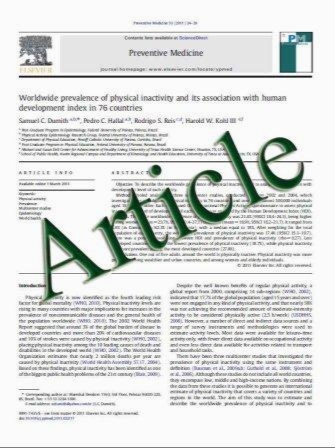Prevalence and Impact of Hepatic Steatosis on the Response to Antiviral Therapy in Saudi Patients with Genotypes 1 and 4 Chronic Hepatitis C
- نوع فایل : کتاب
- زبان : انگلیسی
- مؤلف : Abdallah M. AlQaraawi Faisal M. Sanai Hussa Al-Husseini Ali Albenmousa Abdulmalik AlSheikh Lubna Rizwan Ahmed Ahmad Hersi Molfi M. Al-O
- چاپ و سال / کشور: 2010
Description
Background Hepatic steatosis in hepatitis C virus (HCV)- infected patients has been shown to enhance the progression of liver fibrosis and decrease the response to antiviral therapy. Aims We aimed to determine the role of HCV genotype 4 (HCV-G4) in the prevalence of hepatic steatosis, its impact on antiviral therapy, and its associations and predictive factors in comparison to HCV-G1-infected patients. Methods Treatment-naı¨ve HCV patients who were started on pegylated interferon a-2b plus ribavirin therapy in two centers in Saudi Arabia were included. The severity of steatosis was assessed using the METAVIR and NAS (nonalcoholic fatty liver disease [NAFLD] activity score) scoring systems. Sustained virological response (SVR) was studied in relation to the degree of steatosis. Associations between steatosis and multiple demographic, laboratory, and virological factors were examined. HCV-G1 and HCV-G4 patients were compared. Results A total of 116 patients (HCV-G4 85 [73.3%]; HCV-G1 31 [26.7%]) were included. The mean age was 50.4 ± 10.7 years and 56.9% were males. In terms of steatosis grading using the NAS scoring system, 50% had steatosis grade 0, 26.7% grade 1, 14.7% grade 2, and 8.6% grade 3, while the overall staging of steatosis revealed that 43.1% had mild steatosis, 42.2% moderate, and 14.7% severe. Gamma-glutamyl transpeptidase (GGT), platelet count, body mass index (BMI), cholesterol level, presence of hyperlipidemia, liver histology stage, and grade were significantly correlated with hepatic steatosis in one or more of the statistical analyses. Twenty-two out of 55 patients (40.0%) had an SVR in the mild steatosis group, compared to 52.7% in the moderate group and 7.3% in the severe group (P = 0.03). The HCV genotype did not correlate with steatosis or SVR. Conclusion Our study confirms the high prevalence of steatosis in HCV-G4 and HCV-G1 patients, but with no difference in the grade or score of steatosis between the two genotypes. The grade of steatosis correlates with GGT, platelet count, and BMI, while the NAS score of steatosis correlates with response to antiviral therapy.
Dig Dis Sci (2011) 56:1222–1228 DOI 10.1007/s10620-010-1417-9 Received: 8 July 2010 / Accepted: 29 August 2010 / Published online: 8 October 2010


